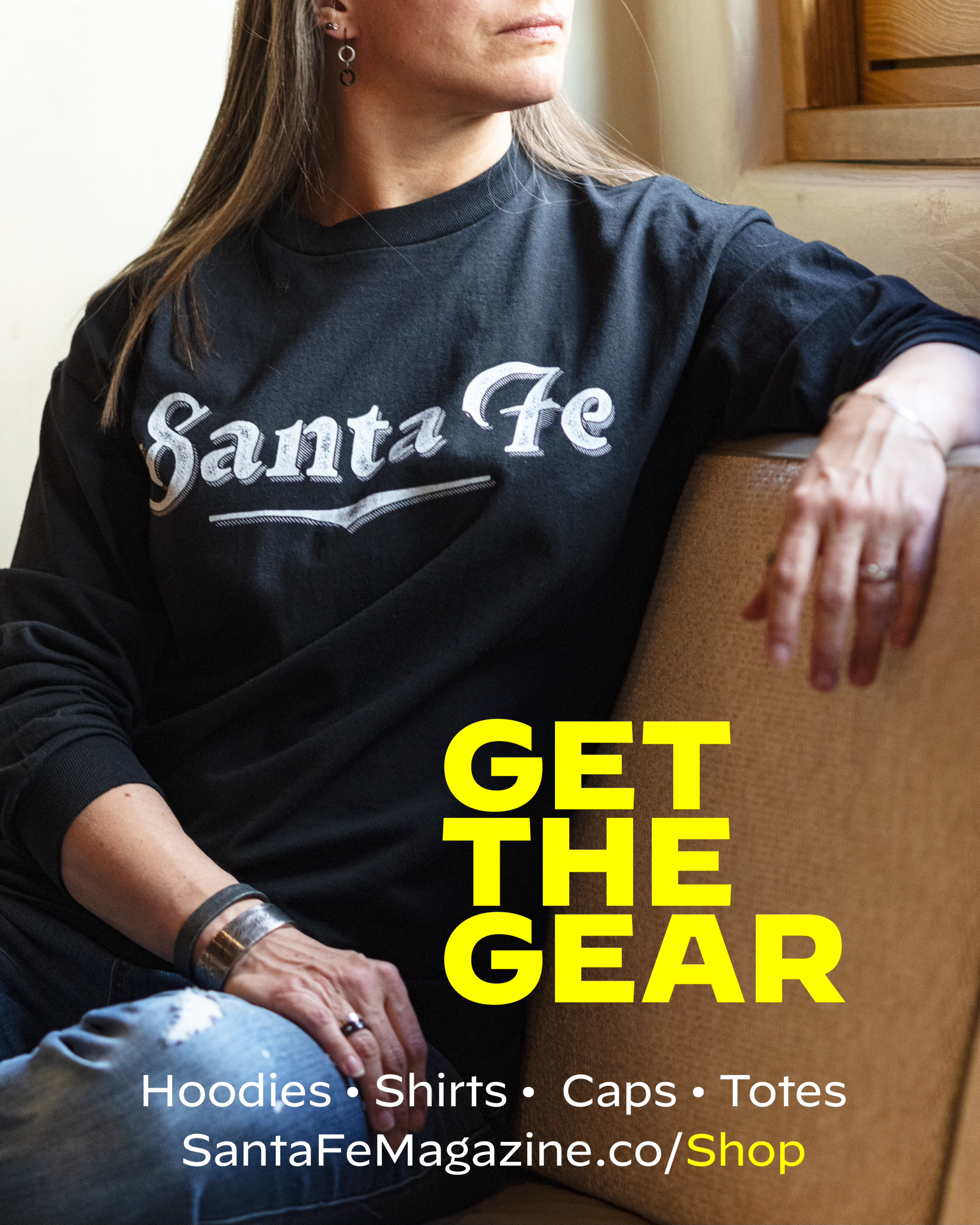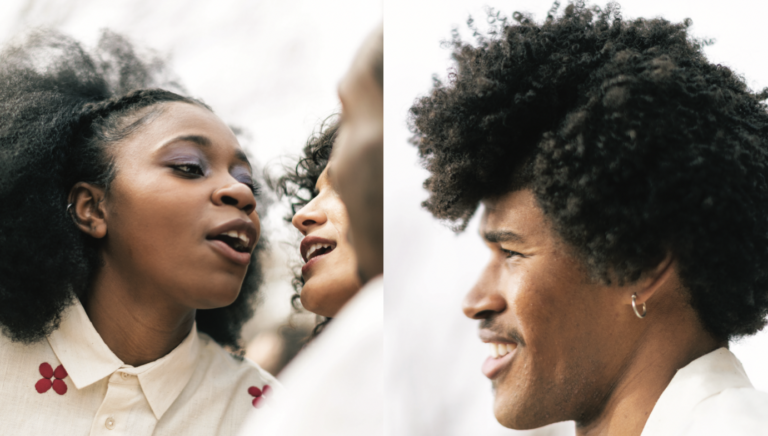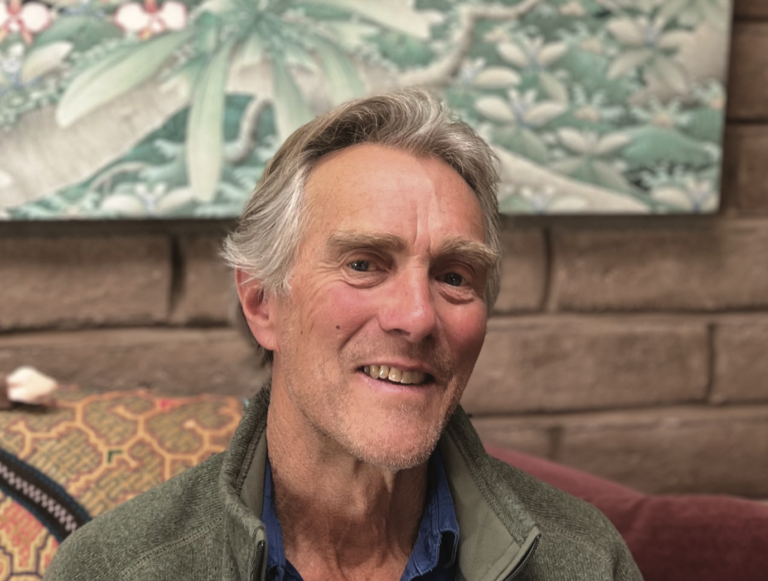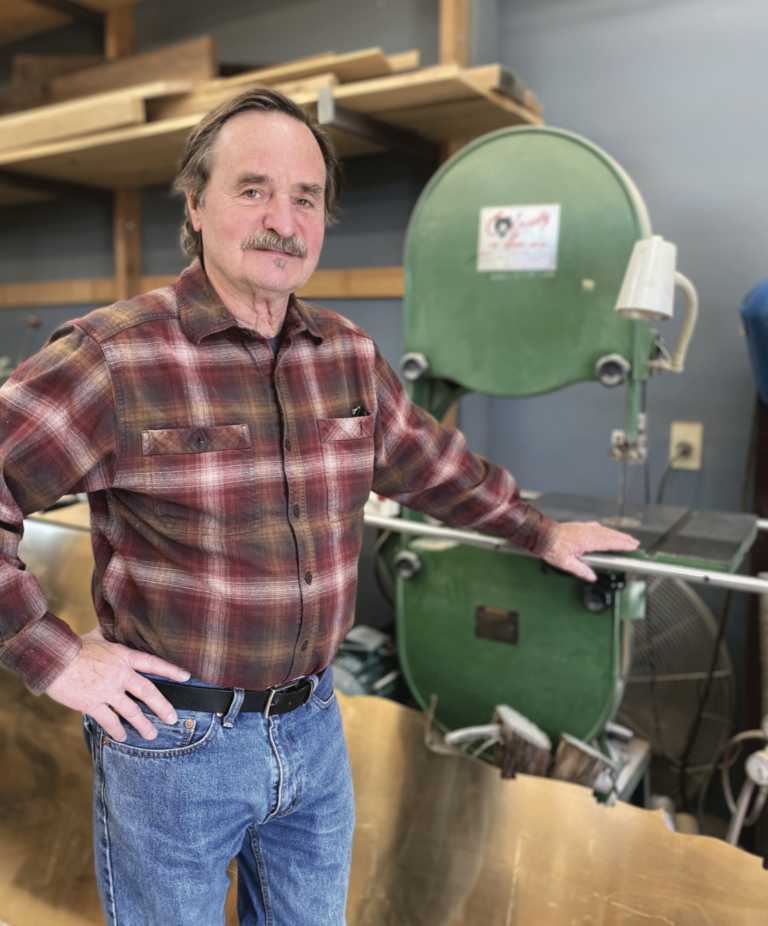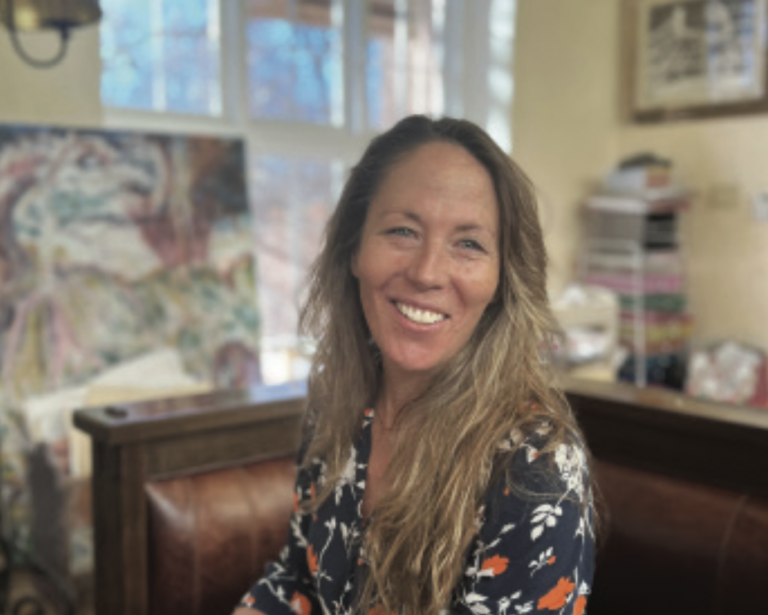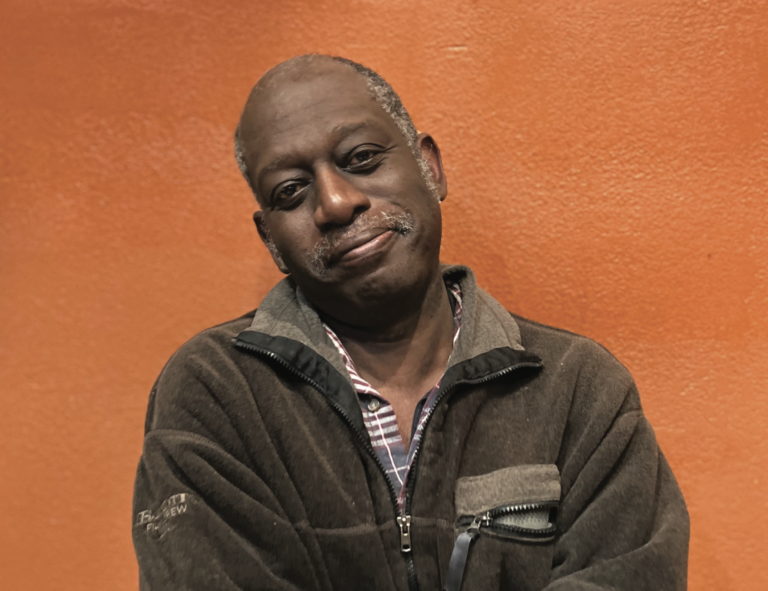LARRY STARTED HIS CAREER IN MEDIA by believing he could channel his particular aesthetics into the corporate world of The New York Times. Unsurprisingly, it didn’t work.
Eventually, he landed in Santa Fe – as so many of us have – by love, by coincidence, by choice.
Here, he concluded that being an entrepreneur might be a better way to affect outcomes in his life and the lives of others. So he created Design Warehouse with some simple, arguably radical premises: Have a store with a strong aesthetic, fill it with furniture that one would want to sit on. Treat a customer as someone with intelligence. And run the place as a helpful friend.
With his home, the same principles applied. He built it piece by piece from scratch. He wanted to start fresh, and manifest everything he had learned about art and design and comfort, about living.
Both his house and the warehouse are consistent, eclectic and maybe as simple as this – he practices what he preaches.
What gave you the idea to start Design Warehouse?
I finally realized in my 30s that I was getting my teeth knocked out by trying to be an anomaly. I mean that I always wanted to be the humanitarian and the humanist in a corporate environment. I never wanted to be the CEO but I wanted to be the good soldier, the vice president, the aide-de-camp, this human, literary, humanitarian voice in a corporate environment.
I had been at Time Inc., Ziff Davis, Hearst. I was done with New Mexico Magazine. I worked there for five years. The publisher had come from Time Inc., and he was ruthless. He didn’t care about my wanting to be an anomaly and to bring this enlightened insight into the magazine. He wanted circulation numbers.
You had an idea that you were going to affect outcome in these places?
My background was English lit, and I wanted to bring a literary, cultured point of view to what I was doing. I think I was a liberal. I wasn’t a bean counter.
I was somebody who wanted to see the bigger picture and manage my staff with the bigger picture. I didn’t want to be in an environment where I was eight o’clock in the morning ’til five o’clock at night with two fifteen-minute coffee breaks.
Also, I always thought that entrepreneurs were losers, people who couldn’t get a job. Because status was having a C in front of your title. I was not an entrepreneur, it was somebody who was either the CEO or the COO or the C-something-or-other.
When I would talk with headhunters, I was told, We can find you a job, but we’re not finding you a job as a vice president. We’re finding you a job in a circulation department, in middle management. I thought, Yet again I’m gonna be forced to live in the most miserable part of New York City – the Upper East Side.
Then I realized the real investment was not being the aide-de-camp or the vice president, it was being the president. Having a vision and embodying that vision, making a culture. Being an entrepreneur is not being a loser, it’s somebody who is putting his soul out there.
What was your idea in coming here?
I came in 1970 from Manhattan to do graduate work in English lit, which I did at UNM for a couple of years. I had an idea, like a lot of us, that New Mexico had a certain romance. And I think the romance for me was that it was a place that attracted outsiders. There’d been D.H. Lawrence, Mabel Dodge, Robert Creeley, Ram Dass. There was that cliche “turn on, tune in, dropout,” right?
So you came here and you were in search of something higher and more important. What happened next?
After five years at New Mexico Magazine, I had this entrepreneurial vision. I decided, Okay. Enough. I’m gonna open up an art gallery. I wanna be the Kahnweiler (Picasso’s gallerist) of Santa Fe. But art was ubiquitous in Santa Fe. You couldn’t go into a restaurant without seeing art on the wall. You couldn’t go into a Xerox place without seeing art on the wall. It was kind of demeaning. Because the art was of such a low quality and it was just so far away from what I wanted to show.
Then it occurred to me, What if I did art that you could sit on, so to speak? What if you could have something aesthetic in your hand, like a great glass or a great mug or a great kettle? And there was this other really sweet aspect too, which was that God, maybe people could really afford it. There’s a democratic component to it.
What made you think you knew the difference between good and great?
Somewhere I came across this idea that the hardest thing in life is to figure out the most important thing in life. And once you figure out the most important thing in life, you’re set.
Art was the most important thing! I developed this notion that art has to be engaging, and retail, if it’s done in a wonderful way, it can be entertaining. I realized that I could make my values tangible and that would really be fun. I’ve said to my colleagues here in this space, the only rule that exists in the story is you are never allowed to say the words, May I help you?
Why?
Ninety-nine percent of the time, you’re going to get a no from somebody. No. And why do you want to start out a transaction with no?
Plus, I think my obsession in those days, in my 30s and it’s still my obsession now, is with authenticity. How does one lead an authentic life? How does one have an authentic business? So I don’t want my colleagues or myself talking in a tape recorder, talking in cliches, May I help you? May I help you? May I help you? Say, Hey dude. Say, Good morning. Say, Hi, sir. Look ’em in the eye. Don’t say anything. Body language is so important.
Take the couch you’re sitting on. Is that informed by your sensibility?
Yeah, my sensibility. In the most intimate way. When this business opened up in 1981, I said to myself, I will never buy anything just because I think it’s gonna sell. I’m gonna buy things that I want in my own living room. If I want ’em in my own house, they’ll sell.
I also knew that Santa Fe sort of closes up at nine o’clock at night, and people are obsessed with sitting around their living rooms making a fire. I thought there was a pretty good shot that people would go after home furnishings if they were warm and minimal and joyful and utilitarian and comfortable.
Do you see this as your art, your curation, your gallery of sorts?
Yeah. But I would never be so bold to call the store art. But it’s my passion, it’s my devotion, it’s the way I’m trying to be an authentic human being. But art is different. Art is Cy Twombly.
Do you like the retail aspect of it?
On a sad day here, I say, I could have gone to law school.
At the same time. I say, thank God I’m not a teacher. I have so much respect for teachers but I taught ninth and tenth grade in the Bronx. I taught eighth grade in Santa Fe. Oh my God. My respect goes out to teachers.
So yeah, I love it. I’ve said often that I love the three Fs: food, film, and fashion. And if you twist my arm, I’ll talk about furniture.
People come in here from New York, they want to know where to eat. So we talk about Via Carota and Buvette on Grove Street in New York, but we also talk about Counterculture and Dolina on Baca and Guadalupe Streets here.
I like people, and maybe I like people more than art and design. I like humans. I think they’re wonderful.
What makes you embrace Santa Fe?
I grew up in Queens. I never told anybody that, but now I can admit it because Queens is a little hipper. I moved here 53 years ago. But I never moved away, I mean, it’s crazy. I never lived in Berkeley; I never got to live in Sonoma or Silver Lake, I’ve been here the whole time. So yeah, there’s an aspect of loving the place. I mean, the best way I could express my affection and relationship to Santa Fe is to talk about building a house again. I sold a really beautiful house with six fireplaces on Acequia Madre a few years ago. Old Adobe, over 100 years old, fixed up every square inch of it, and once it’s sold, I asked myself, What do I do now? And I think I knew that I didn’t want to do another renovation, instead I wanted to do a painting from raw canvas. I was obsessed with this Buddhist concept of nothingness as it relates to a house.
What does that mean?
It means that the sweetest part of the house has to do with the negative spaces. It doesn’t have to do with the architecture or with the furniture. It has to do with the light in the air, it has to do with the space you walk through. And I had this idea that I wanted the house to feel like a skateboard park, a roller skating rink, something that had a lot of space.
I wanted to embody some kind of Scandinavian farmhouse, tall ceiling, big room in the center, kitchen, dining, living room, like a New York loft. And then three bedrooms, two baths, not too big – there’s something magic about square feet. No chest of drawers. Just put your stuff in the closet and a couple of nightstands, I’m obsessed with reading in bed. So a couple of nightstands, some good lamps. Just how do you create what I define to myself as like a place of interiority? I still don’t own a TV. A place to have a thought, a place to read a book, a place to whatever. Chop garlic, chop onions. The project was, How do I embody those things? What kind of place is that? So I just decided that it had to be a place of this natural wood, white and black, some bursts of color, primary colors, you know. Not a lot of stuff.
You had to walk the land in order to know this was the place, I presume?
Yeah. The land was for sale forever. I go back to thinking about Santa Fe, where so many of my friends and loved ones need a view. They wanna see the mountains, they wanna see the ski basin, they wanna see the sunset, they wanna see the rosy fingers of dawn. But not me, I wanna be down low in the middle.
Learn more at designwarehousesantafe.com
Photo SFM

